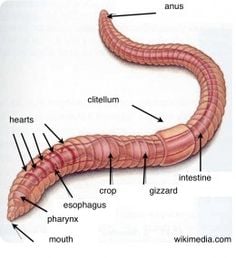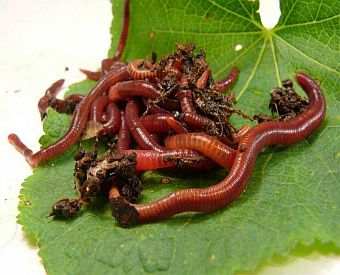Organic Composting with Red Wiggler Worms - Increase Your Garden's Growth
Organic Composting with Red Wiggler Worms - Increase Your Garden's Growth
Blog Article
Taking Full Advantage Of the Benefits of Red Wiggler Worms: A Comprehensive Guidebook for Home Gardeners and Urban Farmers
In the world of sustainable gardening practices, red wiggler worms stand as unhonored heroes, quietly transforming organic waste right into nutrient-rich spreadings that can function wonders for dirt health. By exploring the intricacies of exactly how to properly care for and make the most of the benefits of red wiggler worms, individuals can open a wealth of possibilities for boosting the sustainability and productivity of their horticulture endeavors.
Recognizing Red Wiggler Worms
Red Wiggler worms, renowned for their effective composting capabilities, are a species of earthworms widely used in vermiculture practices. These worms, clinically called Eisenia fetida, grow in decomposing organic material, making them optimal prospects for composting (Red Wiggler Worms). Red Wigglers are voracious eaters, capable of consuming their very own weight in natural waste daily. Their digestion process breaks down natural matter into nutrient-rich castings, which are a beneficial resource for enhancing soil and advertising plant growth.
One key attribute of Red Wiggler worms is their reproductive rate. These hermaphroditic animals possess both female and male reproductive organs, permitting them to reproduce quickly under beneficial conditions. A fully grown Red Wiggler can produce numerous offspring in a short period, making sure a stable populace within a composting system.

Establishing a Worm Bin
When developing a worm bin for vermiculture objectives, correct preparation and attention to detail are crucial for producing a conducive setting for Red Wiggler worms. Begin by selecting a suitable container for your worm container.

Place the worm bin in an amazing, dark place away from straight sunshine and extreme temperature levels. Frequently monitor the wetness levels, adding water if the bed linens feels half-cracked or completely dry. Feed the worms a well balanced diet plan of fruit and vegetable scraps, staying clear of citrus fruits, onions, and spicy foods. By adhering to these actions, you can establish a flourishing worm container that will effectively refine natural waste into nutrient-rich vermicompost for your you could try this out garden.
Feeding and Preserving Worms
Guaranteeing a healthy and balanced diet regimen is crucial for the health and Continued wellness and performance of Red Wiggler worms in a vermiculture system. It is crucial to prevent feeding them citrus fruits, onions, garlic, milk products, meat, and oily foods as these can be dangerous to the worms or create undesirable odors in the container.
Appropriate moisture degrees are additionally critical for the health of Red Wiggler worms. By carefully monitoring their diet, wetness, and environmental problems, home gardeners and city farmers can maintain a healthy and balanced and efficient Red Wiggler worm populace for composting objectives.
Harvesting Worm Spreadings
To successfully extract nutrient-rich worm spreadings from the vermicompost, a systematic harvesting procedure is necessary for optimizing the composting advantages. The first action in collecting worm castings is to encourage the worms to move to one side of the container.
After the spreadings have actually been gathered, it is essential to divide any continuing to be worms from the castings to stay clear of harming them throughout storage space or application. One reliable method is to create conical piles of castings under brilliant light. Worms will intuitively move far from the light, enabling simple splitting up and removal.
Finally, the gathered worm spreadings ought to be stored in a trendy, dark, this hyperlink and dry area to maintain their quality and effectiveness as a nutrient-rich soil modification. By complying with these actions, home gardeners and city farmers can make best use of the benefits of red wiggler worms in their vermicomposting systems.
Making Use Of Worm Castings in Horticulture
The unification of nutrient-rich worm castings right into yard dirt can substantially improve plant development and overall soil health and wellness. Worm castings, likewise called vermicast, are a natural fertilizer produced by red wiggler worms as they damage down raw material. These castings are rich in essential nutrients like nitrogen, phosphorus, potassium, and valuable microbes that advertise plant development and enhance dirt structure.
When making use of worm spreadings in horticulture, it is vital to mix them thoroughly into the dirt or utilize them as a leading clothing around plants. The slow-release nature of worm spreadings makes sure a stable supply of nutrients to plants over time, lowering the risk of nutrient leaching and promoting long-term soil fertility. Furthermore, worm castings aid improve soil aeration, water retention, and microbial task, developing a healthy and balanced atmosphere for plant roots to flourish.

Final Thought
In verdict, the utilization of red wiggler worms in home gardening and urban farming can significantly benefit dirt health and wellness and plant development. By recognizing how to establish up and keep a worm container, feed the worms properly, and collect their nutrient-rich spreadings, garden enthusiasts can optimize the benefits of these earthworms.
In the realm of lasting horticulture methods, red wiggler worms stand as unrecognized heroes, quietly transforming organic waste into nutrient-rich castings that can function wonders for soil health.When establishing a worm bin for vermiculture objectives, proper preparation and focus to detail are crucial for producing a favorable setting for Red Wiggler worms. The initial step in collecting worm castings is to urge the worms to migrate to one side of the bin. Worm castings, also known as vermicast, are a natural plant food generated by red wiggler worms as they damage down natural matter. By understanding just how to establish up and keep a worm container, feed the worms correctly, and harvest their nutrient-rich castings, gardeners can make the most of the benefits of these earthworms.
Report this page